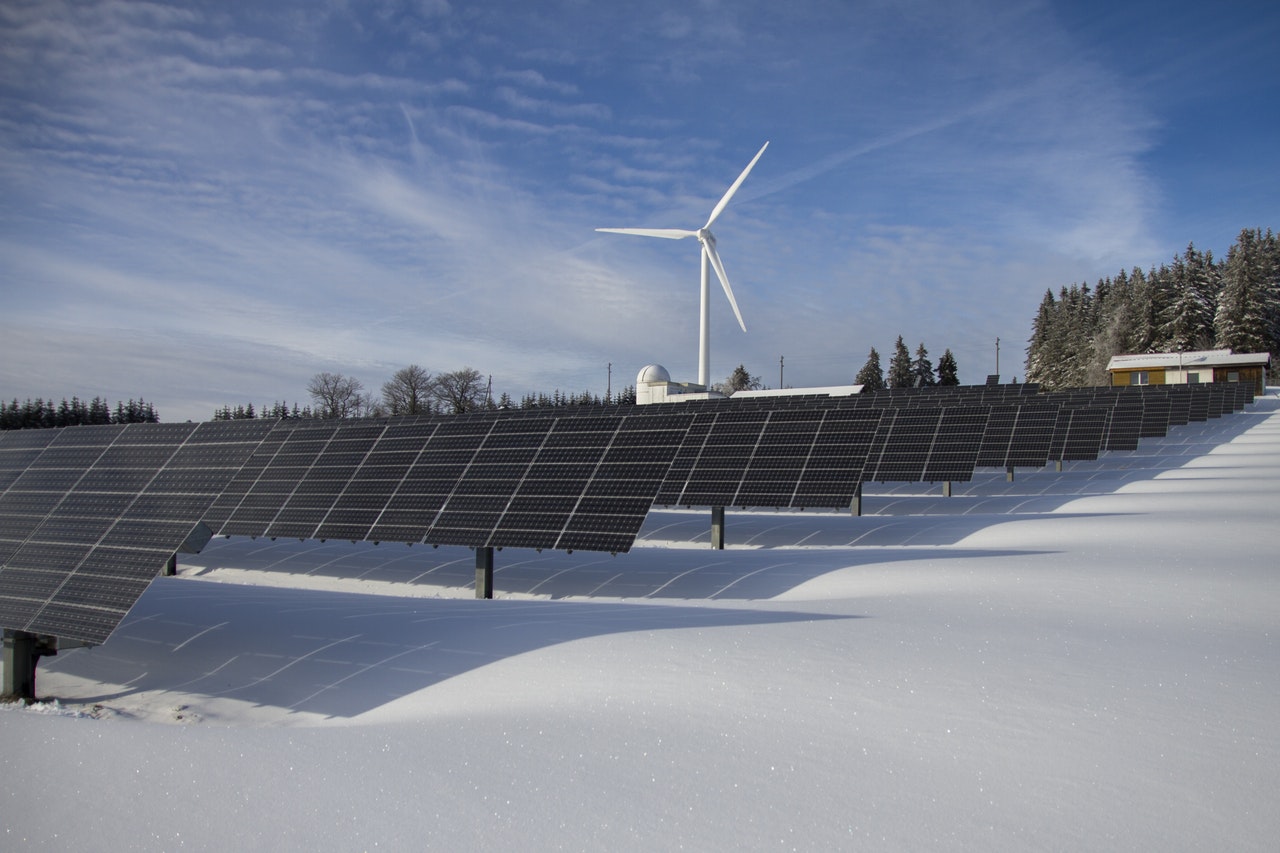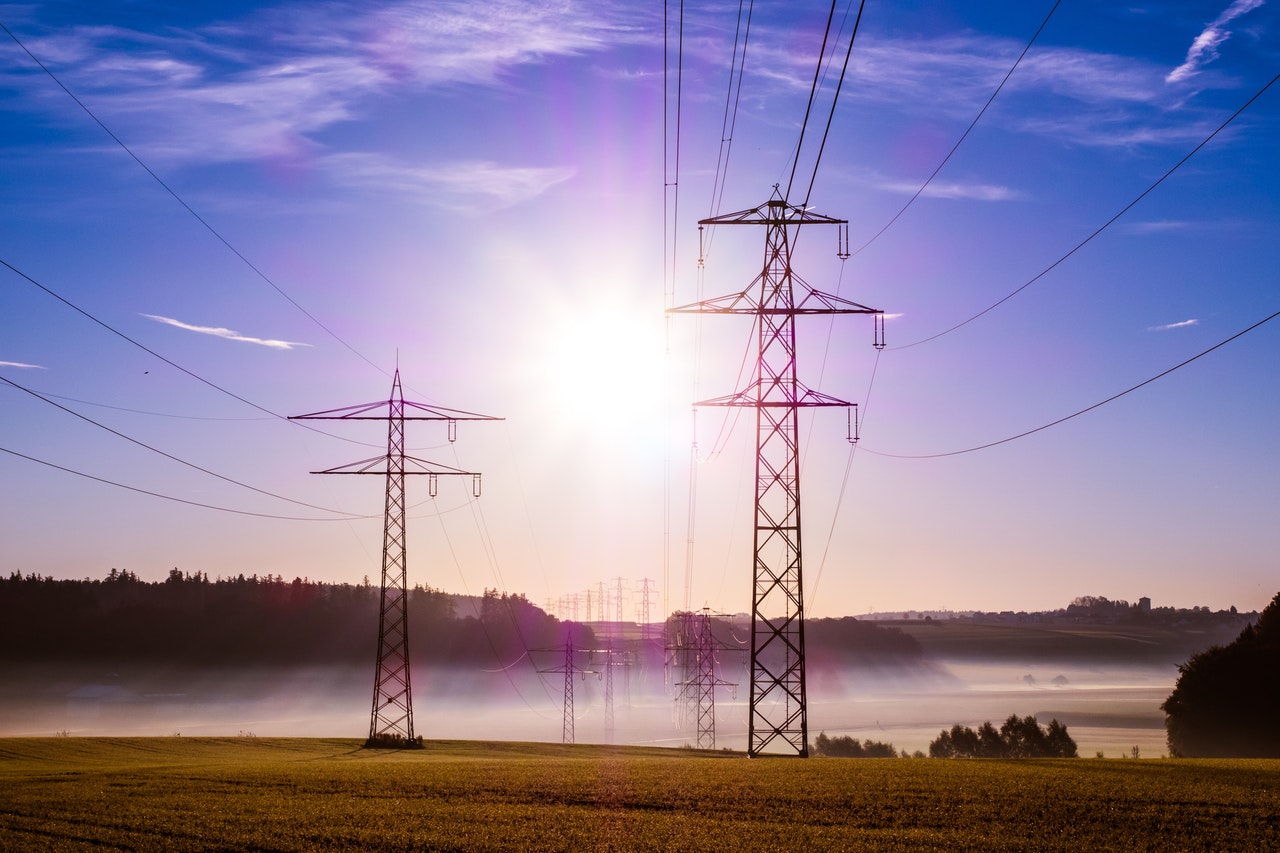The energy sector is sometimes said to be a latecomer to the blockchain party, but it’s making up for it with a slew of new applications in the past year, both on and off the crypto markets.
A host of new companies in this space have raised over $320 million (US) in the past year, through both ICOs and traditional venture capital, and are looking to build value as they examine ways that blockchain technology can ease the shift toward a more flexible, clean and participatory grid.
Major Utilities Organizations Are Adopting Blockchain
Major utilities, too, are recognizing value in the immutable and redundant characteristics of distributed ledger technology, and see the promise of greater flexibility, improved efficiency, and enhanced data security that blockchain would bring to the industry.
In Chile, for example, the Comisión Nacional de Energía de Chile (CNE) announced that it will implement blockchain technology nationwide as of March 2018. Data to be recorded on the blockchain platform include market prices, marginal costs, fuel prices, and compliance with renewable energy regulations.
CNE’s executive secretary Andrés Romero said the move toward blockchain was done especially in the interests of data security:
The National Energy Commission has decided to … use blockchain as a digital notary, which will allow us to certify that the information we provide in the open data portal has not been altered or modified and [retains an] unalterable record of its existence.
Austria-based Grid Singularity, the force behind the influential EventHorizon conference, describes itself as “a key enabler for a sustainable shift from a traditional to distributed energy market model.” Grid Singularity has joined with the US-based Rocky Mountain Institute to establish the Energy Web Foundation, a global non-profit that has recognized some 200 potential energy applications of the blockchain.
The Energy Web Foundation is working in four key theme areas: energy trading, carbon certification markets, demand response programs, and utility billing systems. EWF is currently testing its new blockchain network codenamed Tobalaba, which it proudly proclaims as “the only open-source energy industry blockchain platform” that will facilitate both commercial and non-commercial blockchain applications.
Among dozens of test group participants, one finds major utilities players like Anglo-Dutch Shell and France’s Engie, along with Singapore Power Group, innogy, Duke Energy, E.On and others. The blockchain end draws on the talent of Grid Singularity, Parity Technologies, Brainbot and Slock.it.
Another major consortium involves the UK firm Electron, working with the UK’s National Grid, EDF Energy, and Shell, among others, on two main platforms.
The first is a digital asset platform for keeping track of energy assets, and the second is a trading platform that will allow for a more flexible marketplace for energy products and services. In a recent test, Electron used the blockchain to enable customers to switch accounts between providers in some 15 seconds – a far cry from the 21 days usually required.
With all this innovation among big players, it’s not surprising to find a large number of smaller firms and startups emerging as well. Greentech Media reports it is following 122 start-ups in the energy-blockchain space. And SolarPlaza reviewed 64 blockchain and energy projects in a recent study, and found 1 in 4 had held, or were planning to hold, an ICO or token sale.
As in other sectors, the long-term value of such investments is likely to be determined in part by the utility of the tokens and coins that investors receive, and no doubt partly by the whims of this new marketplace.
There’s not much to say about the latter, so let’s look instead to the use cases for the growing range of “energy tokens”.
The Gateway: Peer-to-Peer Energy Trading on the Blockchain
A healthy portion of recent offerings in this sector have emerged around the idea of peer-to-peer (P2P) energy trading, which some see as a key step in building a modern, distributed, renewable energy grid.
In most electricity markets, if you’re a small generator – say a homeowner who’s installed a solar PV array on your roof – you have limited options when it comes to selling your excess power.
In some jurisdictions, you might sell power to the grid operator under a fixed rate contract (a FIT), but these can be quite constraining, all-or-nothing affairs. In some, you can send power out to the grid and receive credits against later use under a net-metering program. In others, you can sell to the grid at market rates, but this is typically far below what you need to pay off your investment, and also far below the price your neighbor pays for the same electrons.
It’s in this last scenario that proponents see an opportunity for both sellers and buyers to benefit from direct trading, effectively by eliminating the need for an intermediary. Where a community or co-op owns a facility, a decentralized exchange with its own crypto currency might facilitate the distribution of kWh among members and local homes and businesses.
Add in distributed storage facilities, responsiveness to time-of use incentives, and even a capacity to help in balancing the grid, and participants could find even more value in distributed exchanges.
The energy firm LO3 is an early mover with a pilot microgrid project in New York in which blockchain technology is being used to handle data on generation (from local solar), consumption, and P2P exchange among a small number of homes. Initially it was tested among three homes, but there are now well over 50 meters in place.
The Brooklyn microgrid is still working through the regulatory process to enable it to conduct P2P trading, but it is looking to do so using US dollars, and has not sought to issue a token.
In Germany, the innogy Innovation hub gave birth to blockchain firm Conjoule, which is working with Japan’s Tokyo Electric Power Co. in a P2P trial involving two German towns. The pilot is now two years running, and has not issued or used a token. Conjoule more traditionally raised $4.5 million from its two strategic investors.
In Amsterdam, where regulatory agencies are perhaps quicker to allow innovation, a progressive office park called De Ceuvel has created a tradable token called the Jouliette (named after the Joule), to facilitate P2P electricity trading among a dozen or so buildings (many of which have solar panels installed).
It may be that De Ceuvel’s P2P exchange could also work quite well in the absence of a token, but one can also see advantages like local exchange (the Jouliette is accepted at the local café), pride and tourist value, and possibly simplicity, as it revives a barter mentality, but at a scale that isn’t likely to upset authorities.
Energy Tokens in Today’s Crypto Market

Not surprisingly, though, the innovations around energy-blockchain have spurred a good bit of activity on the crypto market, and a growing number of energy tokens are available in ICOs or on exchanges. We’ll now take a look at a few of the more well-known tokens and coins in this space, with an eye to their individual use cases.
SolarCoin
Back in crypto’s infancy (2011), the concept behind SolarCoin was described in a privately published concept paper. The authors, Nick Gogerty and Joseph Zitoli, argued that a currency based on utility could be more stable and tangible than debt- or asset-backed currencies, such as fiat.
They wrote:
The assumption [behind SolarCoin’s model] is that the utilitarian value of electricity can be a more stable store of value for a currency on a forward basis than gold or debt alone.
SLR are generated as a function of renewable energy. Their proof-of-work is verified electricity generation (a stark contrast to Big Brother Bitcoin, whose PoW is a massive consumer of electricity).
The SolarCoin Foundation issues from its reserve of tokens at a rate of 1 SLR per MWh produced; each SLR is redeemable (in theory) for 1kWh of delivered electricity, or for merchandise from participating retailors (think solar supplies, or worker training).
SolarCoin has been available since 2014. To date, some 10,000 solar generators have signed up, and more than 34 million SolarCoins have been put into circulation. The SolarCoin Foundation aspires to issuing up to 100 billion in the next 40 years.
SLR is thus effectively a reward token for solar generators; alternatively, one could say as a currency it is being “mined” on the basis of renewable power generation.
Energitoken
Somewhat similar to SLR, the Energitoken seeks to help build decentralized power markets while incentivizing energy conservation. ETK tokens, based on the Ethereum blockchain, are distributed as a reward for conservation behavior like purchasing efficient appliances or simply reducing consumption.
The brainchild of the Manchester-based firm Energy Mine (which advises a large portfolio of energy accounts in European markets), ETK is envisioned as a means of exchange between electricity suppliers, consumers, EVs, and battery storage, while being promoted as a loyalty reward for transportation, appliance, and utility companies themselves.
Power Ledger
Power Ledger, an Australian startup that shot up in the crypto rankings in late 2017, is also aiming to build from an initial P2P platform base – apt in a country with over 2 million solar producers.
The Power Ledger Platform seeks to enable prosumers (at once producers and consumers) to realize the value of their investment “by allowing them to monetize their excess energy in much the same way as Uber and AirBnb allow people to monetize their cars and spare rooms.”
The firm’s white paper is visionary, speaking of frictionless tokens enabling “citizen-owned microgrids”, and laying out some excellent arguments for the wider adoption of distributed renewable energy and P2P trading.
Their energy trading platform has already been tested in a number of small P2P projects in Australia and New Zealand, but is intended to eventually support a much broader suite of energy applications like storage, EVs, and grid services.
The platform even aims to enable exchange between jurisdictions through the clever use of two levels of tokens: the top level, the POWR token, is financing platform development and will govern eligibility and entry into the platform, while also being tradable globally.
POWR will be redeemable for the second token layer, the locally exchangeable energy trading token Sparkz. As explained in their whitepaper:
Application Hosts such as Energy Retailers and Network Utilities will be required to provide the POWR tokens as surety for the Sparkz they receive from the Platform. The Sparkz are then used to transact electricity between their Customers in their home market. POWR tokens will be escrowed for Sparkz in an Ethereum Smart Bond, and can only be unlocked from the Smart Bond upon the return of the Sparkz.
Thus as more Hosts adopt the platform, and more Sparkz are needed for transactions on it, one could expect organic demand growth for the POWR token. There are just over 350 million POWR on the market from the presale and ICO, with an eventual maximum number of 1 billion. A Loyalty Incentive Program will distribute POWR to both generators and consumers, and will be funded through a modest charge on all P2P transactions.
GRID+
Another promising star is GRID+, which arose from the New York blockchain shop ConsenSys, and raised some $36 million in a pre-sale and ICO in 2017.
The GRID+ user interface, consisting of both software and hardware (currently in development), will use AI and the blockchain to enable customers to procure electricity at optimal prices, encourage them to adjust usage for improved savings, and will eventually enable energy storage integration to allow users to achieve gains through arbitrage. In future, a P2P platform is envisaged as well.
Sales of the GRID token are financing development of the software and hardware package, and will be redeemable in future for the right to buy 500 kWh of electricity through the GRID+ platform at wholesale prices (that is, absent the planned 20% user markup). They will be burned on redemption.
A second token, the BOLT, will be used for the bulk of transactions (primarily prepayment for electricity usage, which has the important effect of reducing credit risk), with its value tied to the US dollar (which does beg the question of why it is needed). In effect, GRID+ will act as a smart energy distributor, with its tokens funding initial development against a promise of future access to electricity.
WePower
WePower takes yet a different approach as it aims to develop a platform to facilitate crowdfunding of renewable energy projects. Project developers will use the WePower platform to raise capital by selling their energy up front, at rates that may be well below retail value.
Here too there are two levels of tokenization at work. The first, in which WePower ($WPR) raised $40 million in a token sale in early 2018, is aimed at funding the platform and business development. WPR token holders will be rewarded with priority access to bidding on future electricity sales from generating facilities within the WePower system, with priority rank based on the proportion of WPR held.
A second level of tokens will be implemented as generators tokenize a portion of their future production in order to raise capital. Generators will also commit to donating 0.9% of the tokenized kWh produced by their facilities. This acts as a fee for using the WePower platform, and is to be distributed proportionally back to the WPR token holders as an ongoing reward for early investors.
Are Energy Tokens Necessary?
Though we’ve mentioned only a handful of the companies at work in this sector, it’s not clear that there are compelling arguments for having tokens at the core of these platforms.
Token functions include their use as currency (i.e. as a means of exchanging or storing value), but they really become network currencies that are only one exchange away from fiat, which might work just as well. Across many of these projects the primary purpose of tokenization seems, rather, to be about raising funds for development, which is to say, crowdfunding, with tokens essentially coupons with some future reward.
Tokens could surely, do much more in this space. Researchers with the German Blockchain Association have suggested tokens could be more useful if they were fungible between a range of functions.
Imagine distributed EV charging fees being part of your home monthly billing, which also reflects offsets from your ownership stake in a community net metering project, income from your PV, storage and arbitrage system, and even microtransactions among your home appliances.
The real potential of the token, then, may lie in using it to transact between applications and platforms, rather than simply within them. Broader platforms like those envisioned by Power Ledger and the Energy Web Foundation may offer a better prospect of bringing out the full potential of a crypto-energy space.
The opportunities for energy projects, though, can be tightly bound by the regulatory regimes in which they hope to work. And while many projects – especially those targeting P2P trading – are keeping to more liberalized electricity markets, few jurisdictions seem ready to consider the degree of deregulation that P2P trading will require.
The EV sector could offer more flexibility, especially since transactional activity could be kept behind the meter.
Final Thoughts

As is the case throughout Cryptoland, some offerings in this sector may be at risk of falling afoul of securities regulations, which is a considerable risk surrounding the hundreds of millions of dollars that has been drawn into this space.
Privacy will also be a concern as these projects roll out. While data integrity and verifiability is among the most compelling features of blockchain, individual users may not be keen to have their usage data available for scrutiny by neighbours, journalists or business competitors.
In the near term, blockchain seems likely to be taken up by utilities for applications in which it can improve efficiency or security, or simplify processes without disrupting business as usual.
But many would argue that disruption is just what the energy industry needs, as digitization, decarbonization and decentralization combine to suggest new relationships tying users (prosumers) together in an energy network.
It’s still early days for blockchain, and while it’s fairly clear the energy sector will continue to change, it’s far from clear what changes will last. As LO3’s managing CEO Lawrence Orsini puts it:
Anybody who tells you they know the business model for the electric grid of the future is confused, because nobody knows what it is… We have to test these models. We have to see how people respond to new technology and new choices.
Related: 3 Green ICOs to Watch in 2018

